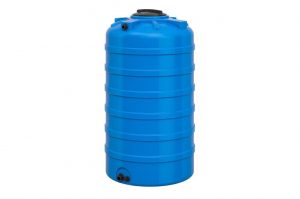Installing a rainwater tank is a smart move for Australian homeowners looking to conserve water and reduce utility bills. To encourage water conservation, various government incentives and rebates are available to make purchasing and installing poly water tanks more affordable. This guide will help you understand these incentives and how to take advantage of them.
Why Install a Poly Water Tank?
 Polyethylene (poly) water tanks are popular due to their durability, lightweight nature, and resistance to rust and corrosion. They are ideal for collecting and storing rainwater, which can be used for gardening, flushing toilets, and even washing clothes. Slimline water tanks are particularly useful for properties with limited space, as their narrow design allows them to fit alongside walls or in tight areas without sacrificing capacity. For instance, a 5,000-litre slimline tank provides substantial storage while maintaining a compact footprint.
Polyethylene (poly) water tanks are popular due to their durability, lightweight nature, and resistance to rust and corrosion. They are ideal for collecting and storing rainwater, which can be used for gardening, flushing toilets, and even washing clothes. Slimline water tanks are particularly useful for properties with limited space, as their narrow design allows them to fit alongside walls or in tight areas without sacrificing capacity. For instance, a 5,000-litre slimline tank provides substantial storage while maintaining a compact footprint.
Government Rebates and Incentives
In Australia, both state and local governments offer rebates and incentives to encourage the installation of rainwater tanks. These programs aim to promote water conservation and reduce the demand on municipal water supplies.
- Queensland: The Western Downs Regional Council offers rebates ranging from $500 to $2,000 for new rainwater tank installations. The rebate amount depends on the tank’s size and whether the property is connected to the council’s potable or non-potable water networks. For residents in non-potable areas, a $2,000 rebate is available for tanks with a capacity of 40,000 litres or more.
- New South Wales: While specific rebate programs may vary, some local councils offer incentives for rainwater tank installations, especially when connected to indoor plumbing for uses like toilet flushing or laundry. It’s advisable to check with your local council for current offerings.
- Victoria: The Victorian government has previously provided rebates for rainwater tanks as part of broader water-saving initiatives. Availability and eligibility can change, so contacting local water authorities or the state government is recommended for the latest information.
How to Apply for Rebates
- Research: Start by visiting your local council’s website or contacting them directly to learn about available rebates and eligibility criteria.
- Select an Approved Tank: Ensure the poly water tank you choose meets the specifications required for the rebate. For example, slimline water tanks are often preferred for urban areas with limited space.
- Professional Installation: Some rebate programs require that the tank be installed by a licensed plumber, especially if it’s connected to indoor plumbing.
- Submit Documentation: After installation, you’ll need to provide proof of purchase, installation details, and possibly photographs to support your rebate application.
- Compliance: Ensure your installation complies with local building codes and regulations, as non-compliance can affect rebate eligibility.
Choosing the Right Tank
When selecting a rainwater tank, consider factors such as available space, water usage needs, and local climate. Slimline water tanks are ideal for narrow spaces and can still offer substantial capacity. For instance, a 5,000-litre slimline tank measures approximately 825mm in width, 4,075mm in length, and 2,180mm in height, making it suitable for installation alongside a house or fence.
Benefits Beyond Rebates
Beyond the initial financial incentives, installing a rainwater tank provides ongoing benefits:
- Cost Savings: Reduced reliance on mains water can lead to significant savings on water bills.
- Environmental Impact: Using rainwater reduces the strain on municipal water supplies and promotes sustainable water use.
- Water Security: Having stored rainwater provides a backup during water restrictions or shortages.
All You Need to Know
Q: Are there any maintenance requirements for poly water tanks?
A: Yes, regular maintenance includes cleaning gutters, checking for debris in the tank, and ensuring that inlet screens and filters are clear to maintain water quality.
Q: Can I install a rainwater tank myself?
A: While some installations can be DIY, connecting the tank to indoor plumbing typically requires a licensed plumber, especially to qualify for certain rebates.
Q: Do I need council approval to install a rainwater tank?
A: Regulations vary by council. In many cases, tanks below a certain size may not require approval, but it’s best to check with your local council.
Q: How much space do I need for a 5,000-litre slimline tank?
A: A 5,000-litre slimline tank typically measures around 825mm in width, 4,075mm in length, and 2,180mm in height. It’s designed to fit in narrow spaces alongside buildings or fences.
Q: Can rainwater be used for drinking?
A: With proper filtration and treatment, rainwater can be made potable. However, it’s essential to adhere to local guidelines and ensure the system is appropriately maintained.
By understanding and utilising available government rebates, you can significantly reduce the cost of installing a poly water tank. This investment not only offers financial benefits but also contributes to sustainable water management in your home.
